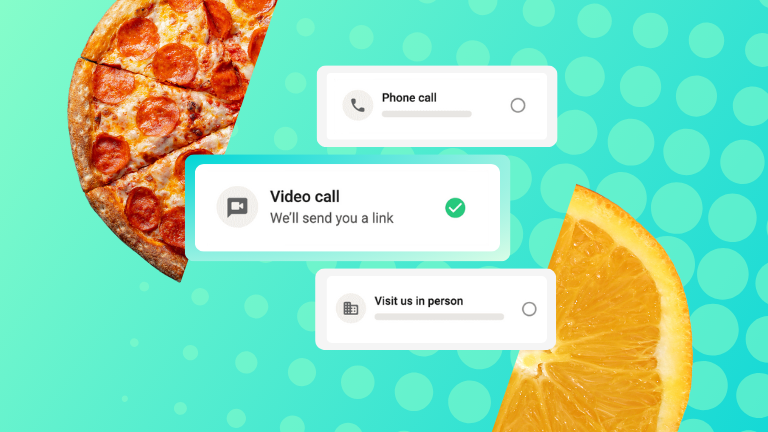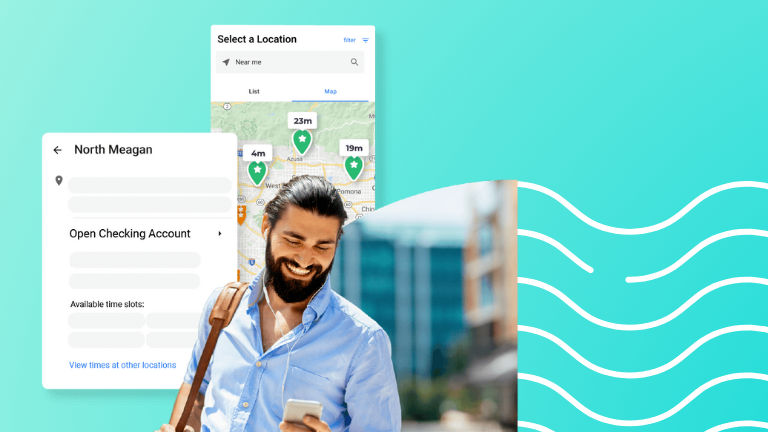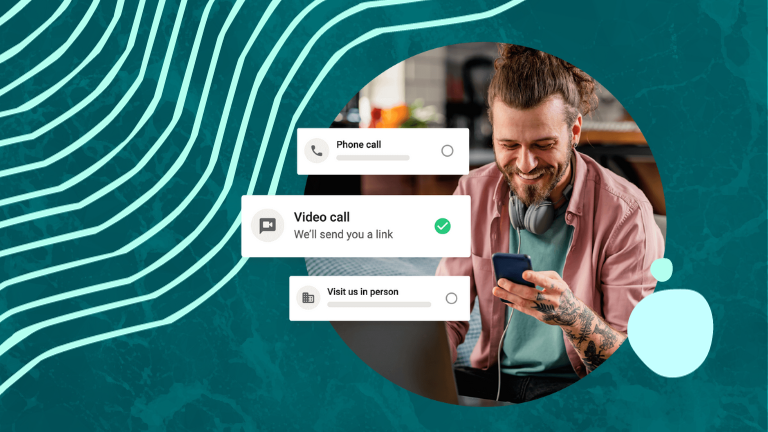6 Simple Ways to Optimize Your Website Calls-To-Action to Increase Appointment Volume and Revenue

In our last blog, we discussed how to increase the probability of customers successfully booking an appointment with your organization, by reducing the number of steps it takes to complete a call-to-action. To drive even more revenue-generating appointments through calls-to-action on your website, your organization can use appointment booking software to eliminate friction, track and measure CTA conversion rate, and optimize CTA performance with A/B testing.
In this blog, we’ll cover the ways in which you can further optimize your CTAs to increase appointment volume and revenue.
Why CTAs Are Critical in Generating More Appointments and Revenue.
Financial services organizations are typically appointment-driven, meaning that new business is generated through in-person interactions between an advisor and the customer. When in-person interactions carry such high value, it is crucial that your CTAs are engaging enough to convert digital customer engagement into an in-person interaction, in order to generate new business and increase revenue.
6 Variables to A/B Testing to Improve Your CTA’s
There are many variables that go into creating an optimized CTA: where it is, what it looks like and what it says. All of these variables contribute to whether or not a customer engages with your CTA. Here are some of the different components of the CTA that you can optimize with A/B testing:
- Headlines and value propositions, to receive the most engagement
- Colours of CTA buttons
- Placement of the CTA – to the right, above the fold?
- Landing page layout
#1 Focus on a primary CTA for the landing page.
One way to optimize CTA performance is to have one goal for each page on your website, and tailor the accompanying CTA to one desired customer action. Providing more than one CTA on a given page can overwhelm the customer and reduce the probability that they will complete the desired action. Each page on your website should correspond to a specific CTA in order to streamline the experience for the customer and increase your conversion rate.
#2 Review your page headline and value proposition to ensure that it resonates.
Through A/B testing the headlines and value propositions on your landing pages, you will learn more about the individuals visiting your website, as well as what does and does not engage them. By better understanding your audiences’ preferences, you will be able to produce headlines that are relevant to your customers and increase the chances of landing page action completions.
Here are some headlines and value propositions that may help increase customer engagement:
- Save for retirement
- Start saving for your child’s future interests and activities
- Stay on top of your spending
#3 Use language that’s direct, persuasive and prompts your visitors to take action.
According to the Nielsen Norman Group, the average attention span of a digital customer is 10 seconds per web page that they visit. If you want your customers to engage with you, you need to “talk” to them with clear and direct CTA messaging. You should use tangible and action-oriented language to provide your customers with clear direction about what they will get by clicking on the specific CTA.
These are some common calls-to-action for banking and credit unions:
- Book an Appointment
- Open a Chequing Account
- Find a Branch or Location
- Pre-Qualify for a Mortgage
#4 Test different visual formats.
Another way to keep the journey simple for your customers is by using buttons for your CTAs instead of links. When your pages are full of text it can be easy to miss the CTA when it is embedded as a link in the text. By creating button CTAs, you are increasing visibility and the probability of customer engagement.
#5 Optimize your landing page layout.
One way to increase the engagement of your CTAs is through providing a very direct path to your customers. Your landing pages should include an organized visual hierarchy that will take your customers through a set of cohesive steps so that they are equipped with the information they need when they reach the CTA. One of the ways to foster engagement is through a page layout known as the Z-pattern, which follows the natural habits of a customer when they read your web-page. The design traces the route that the human eye travels when reading — left to right, top to bottom. If you follow this pattern when leading to your CTAs then you may have a higher chance of achieving your desired customer engagement.
#6 Provide secondary calls-to-action throughout the customer journey, for those who aren’t ready to take that next step.
Although you do not want the CTAs on your landing pages to be competing for the attention of the customer, it is beneficial to provide subtle secondary CTAs for individuals early on in the buying process, who require more information before they engage in your primary CTA. This could be incorporated deeper into your landing page and say something like “Want more information?”
Streamline the customer appointment booking journey across all channels and increase appointment volume with Coconut Software.
Coconut Software enables you to streamline the customer appointment booking journey–from clicking a ‘Book an Appointment” CTA, to improving the conversion rate in your appointment booking funnel. Implementing a self-serve booking channel helps you accept after-hours appointment demand that you may not be capturing today, which can increase appointment volume by 41%.
A self-serve appointment channel also helps you decrease no-shows, with automated appointment confirmations and pre-appointment reminders. And, over time, improving the customer appointment booking experience can lead to higher appointment value.
When customers start their journey with your financial institution with clear, accessible CTA language, an intuitive appointment booking flow and convenient reminders about when to arrive and what to bring for their appointment, the advisor is better set up to deliver a successful appointment.
What’s Next?
Ready to discover what areas of your customer journey are damaging your customer effort score? Schedule a customer effort assessment.
Interested in learning how appointment scheduling can help your entire organization engage more efficiently and effectively with customers? Download our Customer Experience Whitepaper.
Ready to get started? Schedule a consultation today.





